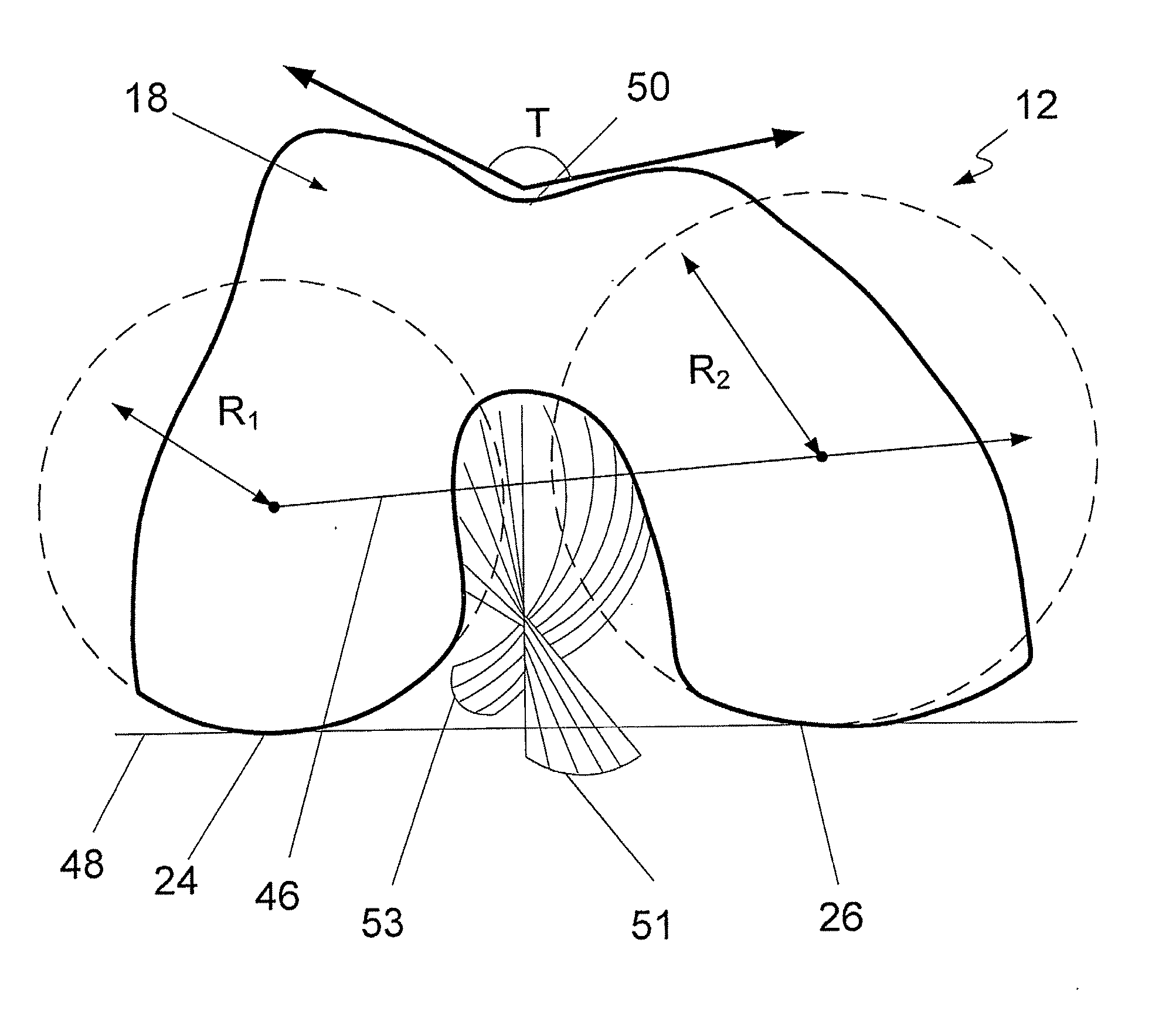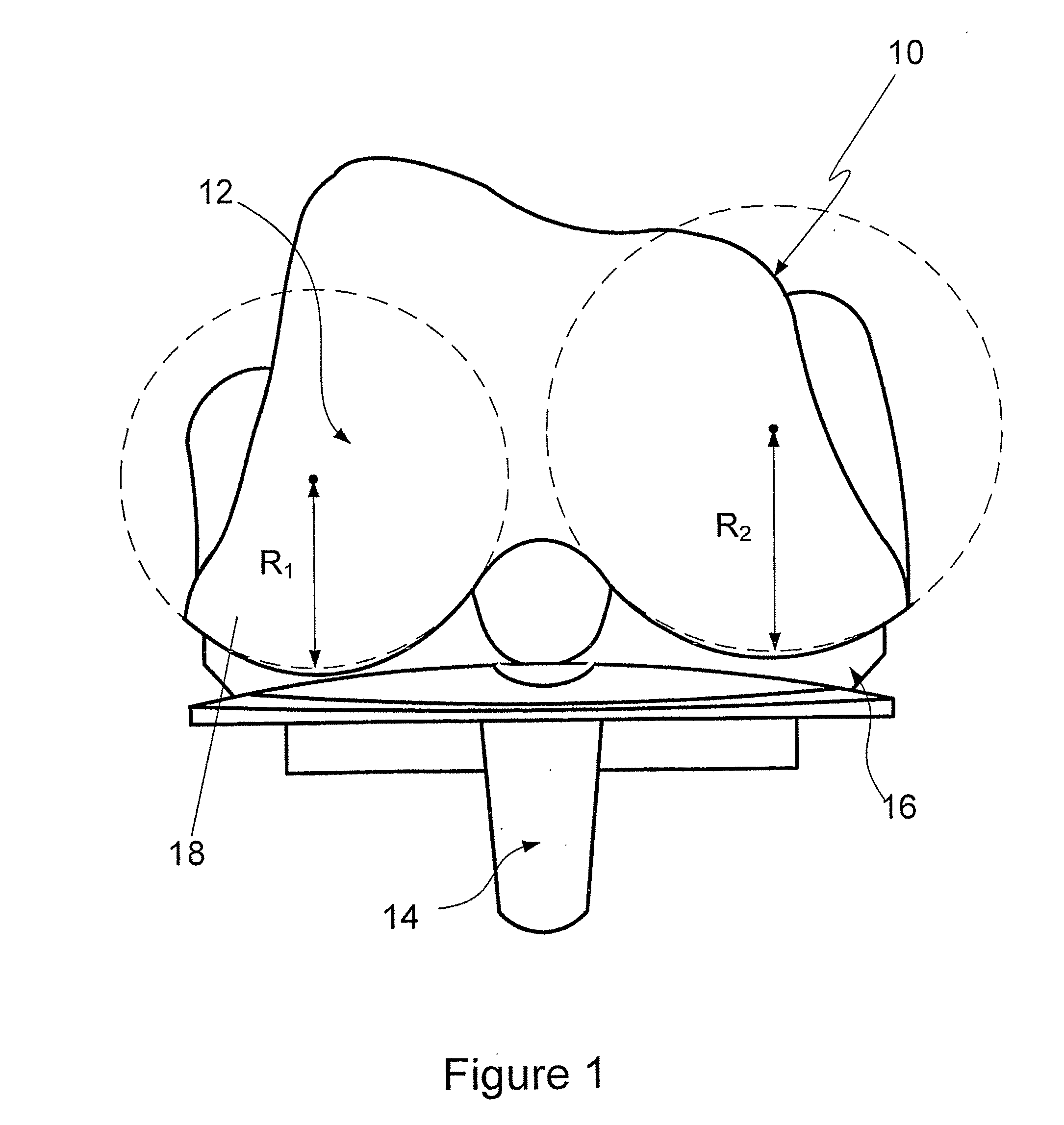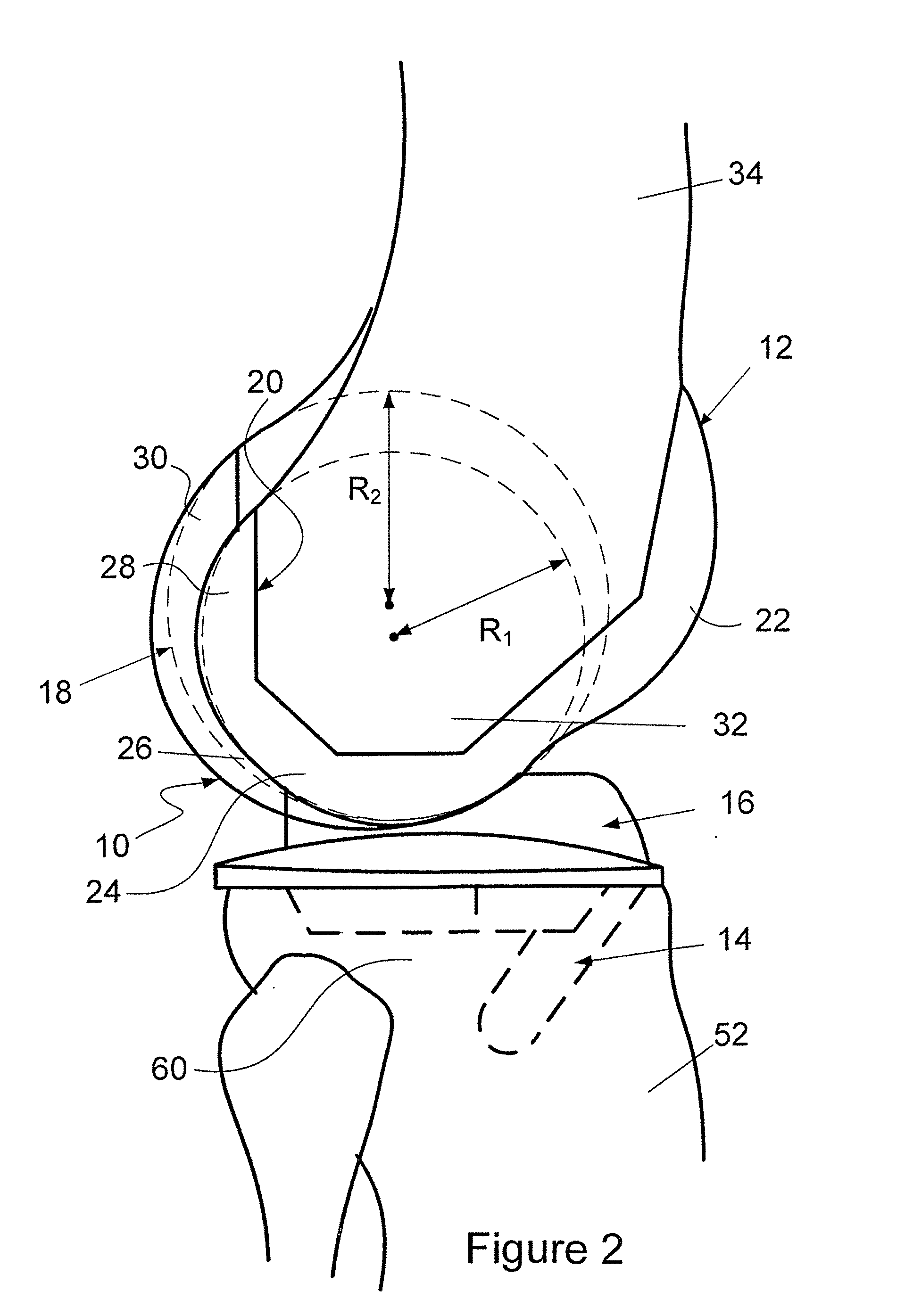Prosthetic Knee
a technology for prosthetic joints and knees, applied in the field of prosthetic knees, can solve the problems of not being able to adequately simulate femoral roll back, unable to permit posterior/anterior translation of femoral bearing surfaces with respect, and unable to permit anterior/anterior translation of femoral bearing surfaces
- Summary
- Abstract
- Description
- Claims
- Application Information
AI Technical Summary
Problems solved by technology
Method used
Image
Examples
Embodiment Construction
[0057] As used herein, the following directional definitions apply. Anterior and posterior mean nearer the front and near the back of the body respectively. Thus, for the knee joint described herein, anterior refers to that portion of the knee that is nearer the front of the body when the leg is in an extended position. Proximal and distal respectively mean nearer to and further away from the root of the structure in question. For example, the distal end of the femur is the end of the femur that forms part of the knee joint and the proximal end of the femur is the end of the femur that forms part of the hip joint. Medial and lateral mean nearer to and further away from the sagittal plane respectively. The sagittal plane is the imaginary vertical plane that divides the body into left and right halves.
[0058] The prosthetic knee 10 shown in FIG. 1 advantageously restores normal functionality to the knee of a person. The prosthetic knee 10 utilises the tendons and ligaments surrounding...
PUM
 Login to View More
Login to View More Abstract
Description
Claims
Application Information
 Login to View More
Login to View More - R&D
- Intellectual Property
- Life Sciences
- Materials
- Tech Scout
- Unparalleled Data Quality
- Higher Quality Content
- 60% Fewer Hallucinations
Browse by: Latest US Patents, China's latest patents, Technical Efficacy Thesaurus, Application Domain, Technology Topic, Popular Technical Reports.
© 2025 PatSnap. All rights reserved.Legal|Privacy policy|Modern Slavery Act Transparency Statement|Sitemap|About US| Contact US: help@patsnap.com



